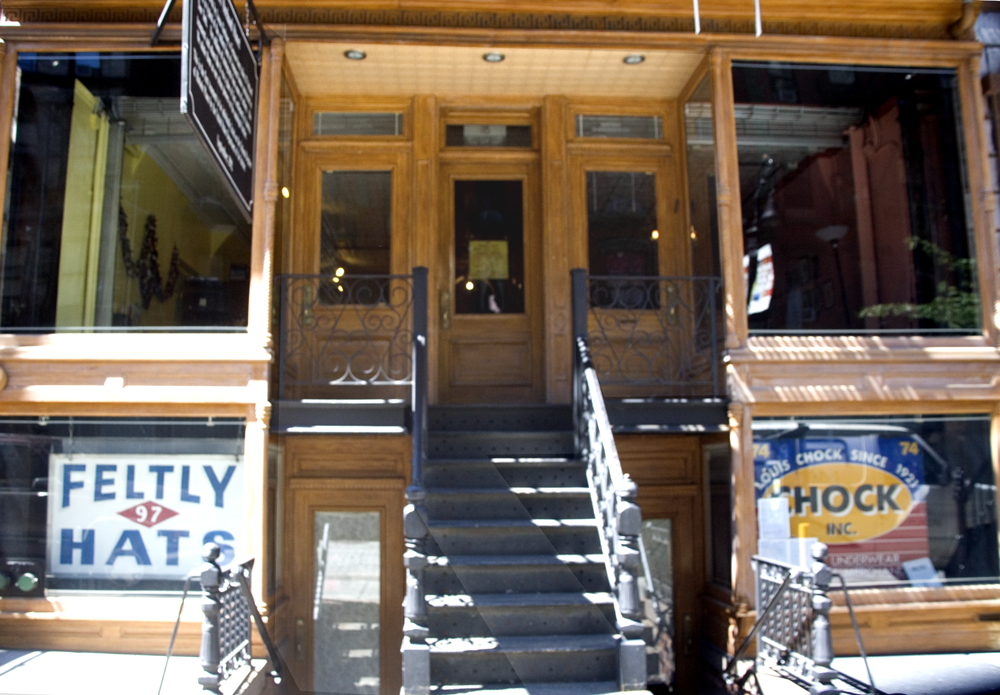
By Denise Mattia
There are times when a sound, venue or flavor triggers rich reminiscences of my childhood and heritage. Such was the case when I visited the Lower East Side Tenement Museum at 97 Orchard Street in Manhattan, a National Trust Historic Landmark and Site, which was home to an estimated 7,000 people from 1863 to 1935. The building is a tribute to urban working-class immigrants, who came to America and became an integral part of its history. My grandparents were included in that group.
Like so many Eastern Europeans, my maternal grandmother arrived alone in the 1890s at the age of 16. She found work sewing and cleaning, learned English, married and had children. In the Tenement Museum portions of the walls and ceilings painted in decorative motifs have been uncovered. Seeing them, I remembered my grandmother describing the colors and shapes of the floral bouquets her husband, my grandfather painted above the doorways of their apartment on Rivington Street after they were married.
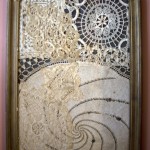
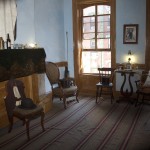
I never knew my grandfather. In the 1920s he disappeared and was never heard from again. My mother suggested he sailed back to “Mother Russia,” but that was never confirmed. My grandmother, alone and this time with two children to support, took on extra work, surviving with the help of her young daughter, my mother. The scenario is a later version of Natalie Gumpertz, who lived at 97 Orchard Street and who raised her three daughters on her own after her husband mysteriously disappeared in 1874.
The American dream was to move out of the neighborhood. My grandmother did, finally. Still, no matter how far uptown she would go, she considered the Lower East Side her home. No uptown green grocer, baker or meat monger were good enough for grandma. She would travel to her neighborhood to purchase these items and more. When I was old enough she would hold my hand tightly and we’d ride the bus all the way downtown, where we’d walk through narrow streets. She’d buy half of a giant loaf of rye bread and sweet, creamy butter in one shop, a length of fabric on Orchard Street and, at a place I can’t recall, a fresh chicken, which would be plucked in front of our eyes.
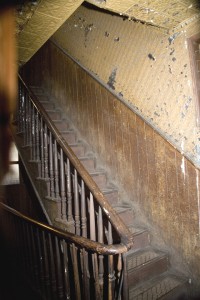 On occasion, she’d bring me to a building and we’d climb the tall steps, ring a bell and walk through wooden doors into a narrow hallway filled with aromas, which had lingered from incalculable meals having been prepared over the century. Tiles speckled the landings – little black squares surrounded by white ones. A deep groove in the center of each stair marked the place where hundreds of
On occasion, she’d bring me to a building and we’d climb the tall steps, ring a bell and walk through wooden doors into a narrow hallway filled with aromas, which had lingered from incalculable meals having been prepared over the century. Tiles speckled the landings – little black squares surrounded by white ones. A deep groove in the center of each stair marked the place where hundreds of 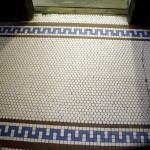 feet had trod. We climbed forever – to where her friend lived, and they would sit and talk for what seemed like hours, but was really less than one, in a language I wasn’t allowed to learn (“no child of mine will speak with an accent,” my mother warned my grandparents), while her friend crocheted or stitched and I sat patiently and waited to return home. The apartments in the Tenement Museum are exactly as I’d remembered — the sturdy wooden table and chairs, a window between the kitchen and sitting room, which allowed a modicum of light and ventilation in the summer or heat from the kitchen stove in the winter, a sewing machine in the corner near a window that faced the street, a hand-made dress or mantle covering – this was the rubber-stamp décor of thousands.
feet had trod. We climbed forever – to where her friend lived, and they would sit and talk for what seemed like hours, but was really less than one, in a language I wasn’t allowed to learn (“no child of mine will speak with an accent,” my mother warned my grandparents), while her friend crocheted or stitched and I sat patiently and waited to return home. The apartments in the Tenement Museum are exactly as I’d remembered — the sturdy wooden table and chairs, a window between the kitchen and sitting room, which allowed a modicum of light and ventilation in the summer or heat from the kitchen stove in the winter, a sewing machine in the corner near a window that faced the street, a hand-made dress or mantle covering – this was the rubber-stamp décor of thousands.
Once home, I’d watch grandma unwrap the bread and, holding it close to her bosom, carve a perfect half wedge with her special knife. With another knife, she’d cut a small slab of the soft butter and spread it on my allotted piece. I ate it with gusto, while she told me more stories of her life on the Lower East Side and made her chicken soup, the likes of which I’ve never been able to duplicate. I didn’t care much about them then, but just thinking of that savory sweet butter on rye brings back snippets of those tales. I wish I’d been at the age to write them down.
Fortunately, the Lower East Side Tenement Museum preserves stories of others. Visitors from around the world come to the Museum seeking to remember a past, explore  their own immigrant roots, learn about America’s rich history and to understand how the lives of immigrants shaped every walk of life today. The Museum reminded me of the tenacity of my grandmother and the hope she held of a better future when she came here.
their own immigrant roots, learn about America’s rich history and to understand how the lives of immigrants shaped every walk of life today. The Museum reminded me of the tenacity of my grandmother and the hope she held of a better future when she came here.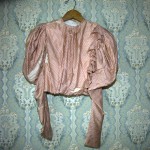
# # #
The Tenement Museum is only available in groups by guided tours. For more information visit www.tenement.org
About Denise Mattia
A writer and photographer, Denise Mattia’s works are published nationally and internationally and include all aspects of leisure travel: art , culture, resorts, spas, food and wine and sports’ activities. She's the founder of the soon to be launched Yum-Yum-Traveler, a site devoted to reviewing restaurants in addition to her travel articles from around the world. She lives and works in Manhattan, where she was born.
- Web |
- More Posts (91)
